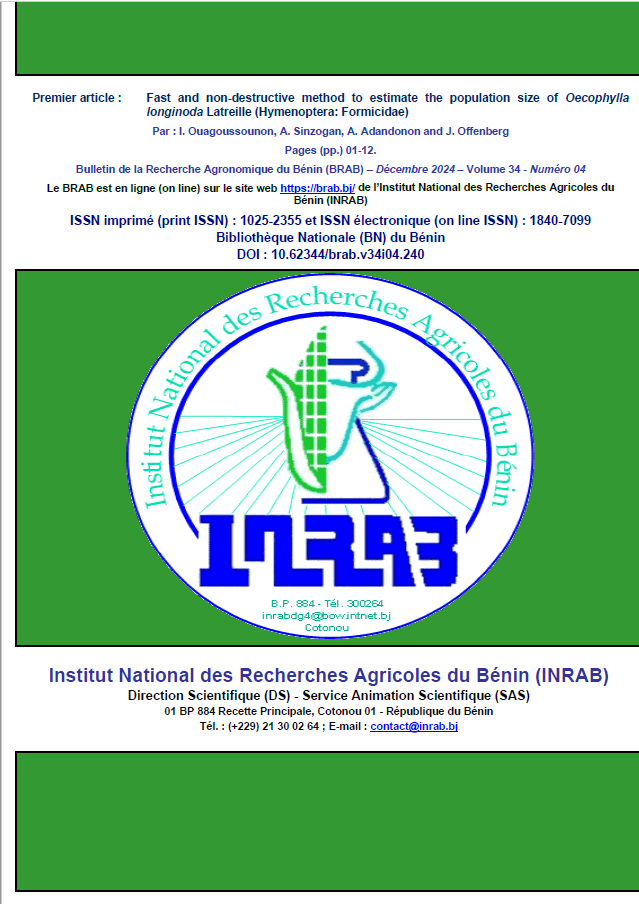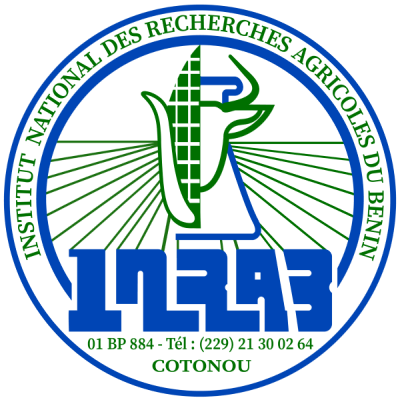Fast and non-destructive method to estimate the population size of Oecophylla longinoda Latreille (Hymenoptera: Formicidae)
DOI:
https://doi.org/10.62344/brab.v34i04.240Keywords:
Weaver ant, nest size, population estimate, Mangifera indica, Anacardium occidentaleAbstract
Weaver ants make their nests in trees or shrubs using living leaves in tropical forests. It is challenging to estimate the whole biomass and number of ants in a nest, including the immature and winged stages. So far, destructive sampling of the nest and killing the ants within are the only methods to count the number of ants inside a nest. The present research was to estimate, based on non-destructive methods, numbers and biomass of weaver ant in mango and cashew orchards. Twenty brood nests were randomly picked and labelled in an unsprayed mango and cashew orchards at Tchaourou (Benin). Each nest was measured in terms of height and length; after each nest was split and then worker ant numbers, winged ants, eggs, larvae and pupae were counted. The parameters (length and height of the nest, number of immature stages, workers, total number of ants, fresh and dry mass of all ants) were submitted to linear regression analyses to develop at prediction models. Total ant densities inside the nest was significantly different between crops and was not significantly different with the season. The linear equations using nest size as an independent variable could provide variability in workers, total ant numbers, wet mass and dry mass inside the nest. High R2 values (0.71 and 0.80 respectively in cashew and mango orchards) were found when total ant numbers inside the nest and the nest size were considered. Models developed with nest size were found to have precision and is convenient and reliable. The study proves that model using the nest size provides better estimates of ant populations inside the nest.

Published
Issue
Section
License
Les articles publiés par le Bulletin de la Recherche Agronomique du Bénin sont en libre accès. Ils sont gratuits pour tout le monde, immédiatement téléchargeables dès la publication et distribués sous la licence CC BY-NC-ND (https://creativecommons.org/licenses/by-nc-nd/4.0/).







